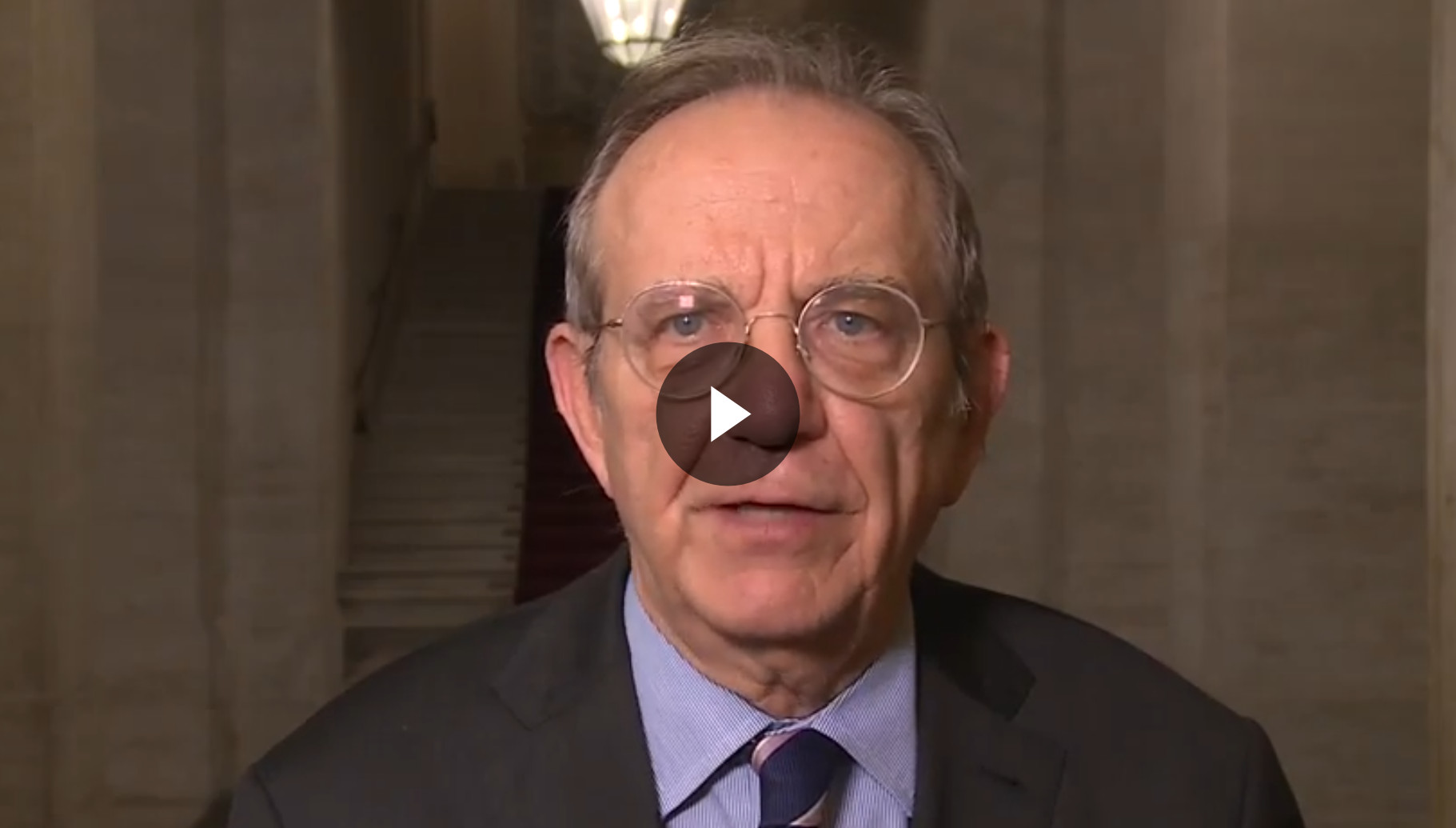Rome, April 13, 2017 – On 11 April 2017 the Council of Ministers accepted the proposal of Prime Minister Paolo Gentiloni and of the Minister of the Economy and Finance Pier Carlo Padoan and approved the 2017 Economic and Financial Document [EFD] as well as a Decree Law containing urgent provisions on matters of finance, initiatives in favour of local authorities, further interventions in favour of the areas affected by seismic events and development measures.
"This EFD is entirely consistent with government policies of recent years and it foresees a growing economy and public finances that continue on the road to adjustment despite the difficult international context. Together with the National Reform Plan [NRP], it reaffirms that growth is the long-term aim. Reforms continue and the new measures in this NRP are very important." That was how Minister Padoan, in a video broadcast on the MEF's YouTube channel, presented the measures approved by the Government.
"In the EFD there are also other adjustment measures for the full achievement of the goals set by Europe. There are expansionist investment measures relating to the reconstruction of earthquake-hit areas and there are financial measures aimed at growth in competitiveness. There is also a decree from the Prime Minister's Department which prescribes a long-term plan involving considerable resources and investment for growth, infrastructure and technology," he concluded.
The priority objective of the Government - and of the fiscal policy outlined in the EFD - is therefore to raise growth and employment steadily, while preserving the sustainability of public finances. For the year 2017 the growth forecast of 1.1% is confirmed thanks to the expected results of the reforms launched in previous years. It is the Government's intention to continue with the economic policies adopted since 2014, aimed at freeing the country's resources from an excessive tax burden and at the same time boosting investment and employment while respecting the needs of budgetary consolidation. With regard to safeguard clauses, which are still envisaged for 2018 and 2019, the Government intends to replace them with spending and revenue measures, including further counter-evasion measures. This objective will be pursued in the 2018 Budget.
In the future the Government will play an active role with other European partners in the creation of common rules on economic governance with a view to establishing an adjustment path that is compatible with the need to support growth and jobs. The government considers it a priority to continue the revival in public investment. In order to achieve greater efficiency and rationalisation of investment spending, it is necessary to intervene to improve the planning capacity of local authorities and contracting entities for the implementation of public works.
| TABLE I.3: PUBLIC FINANCE INDICATORS (as a percentage of GDP)(1) | ||||||
|---|---|---|---|---|---|---|
| 2015 | 2016 | 2017 | 2018 | 2019 | 2020 | |
| PLANNING FRAMEWORK | ||||||
| Net debt | -2,7 | -2,4 | -2,1 | -1,2 | -0,2 | 0 |
| Primary Surplus | 1,5 | 1,5 | 1,7 | 2,5 | 3,5 | 3,8 |
| Interest | 4,1 | 4 | 3,9 | 3,7 | 3,7 | 3,8 |
| Net Structural Debt(2) | -0,5 | -1,2 | -1,5 | -0,7 | 0,1 | 0 |
| Structural Variation | 0,3 | -0,7 | -0,3 | 0,8 | 0,8 | -0,1 |
| Public Debt (inc. support loans)(3) | 132,1 | 132,6 | 132,5 | 131 | 128,2 | 125,7 |
| Public Debt (net of support loans)(3) | 128,5 | 129,1 | 129,1 | 127,7 | 125 | 122,6 |
| Objective for debt rule(4) | 123,7 | |||||
| Proceeds of privatisations | 0,4 | 0,1 | 0,3 | 0,3 | 0,3 | 0,3 |
| TREND FRAMEWORK | ||||||
| Net debt | -2,7 | -2,4 | -2,3 | -1,3 | -0,6 | -0,5 |
| Primary Surplus | 1,5 | 1,5 | 1,5 | 2,4 | 3,1 | 3,4 |
| Interest | 4,1 | 4 | 3,9 | 3,7 | 3,7 | 3,8 |
| Net Structural Debt(2) | -0,5 | -1,1 | -1,6 | -0,7 | -0,2 | -0,4 |
| Structural Variation | 0,3 | -0,6 | -0,5 | 0,9 | 0,5 | -0,1 |
| Public Debt (inc. support loans)(3) | 132,1 | 132,6 | 132,7 | 131,5 | 129,3 | 127,2 |
| Public Debt (net of support loans)(3) | 128,5 | 129,1 | 129,3 | 128,2 | 126,0 | 124,1 |
| MEMO: Draft Budgetary Plan 2017 (October 2016) | ||||||
| Projected net debt | -2,4 | -2,3 | -1,2 | -0,2 | ||
| Net Structural Debt(2) | -1,2 | -1,6 | -0,7 | -0,2 | ||
| Public Debt(5) | 132,8 | 132,6 | 130,1 | 126,7 | ||
| MEMO: 2016 EFD UPDATE (September 2016) | ||||||
| Net debt | -2,6 | -2,4 | -2,0 | -1,2 | -0,2 | |
| Primary Surplus | 1,5 | 1,5 | 1,7 | 2,4 | 3,2 | |
| Interest | 4,2 | 4 | 3,7 | 3,6 | 3,4 | |
| Net Structural Debt(2) | -0,7 | -1,2 | -1,2 | -0,7 | -0,2 | |
| Structural Variation | 0,2 | -0,5 | 0 | 0,5 | 0,6 | |
| Public Debt(5) | 132,3 | 132,8 | 132,5 | 130,1 | 126,6 | |
| Trend of nominal GDP (absolute value in thousands) | 1.645,4 | 1.672,4 | 1.709,5 | 1.758,6 | 1.810,4 | 1.861,9 |
| Planned nominal GDP (absolute value in thousands) | 1.645,4 | 1.672,4 | 1.710,6 | 1.757,1 | 1.809,3 | 1.860,6 |
- (1) Any discrepancies are due to rounding.
- (2) Net of one-off items and the cyclical component.
- (3) Including or net of Italy's share of EMU loans to Member States, bilateral loans or loans made through the EFSF, and of contributions to the ESM's capital. At end 2016 these shares totalled about 58.2 billion, of which an amount of 43.9 billion represented bilateral loans and loans through the EFSF and 14.3 billion the ESM program (see the Bank of Italy's statistical bulletin 'Public Finance: Borrowing Requirements and Debt' of 15 March 2017). In 2015 and 2016, preliminary estimates of government debt published in March by the Bank of Italy slightly increased (about 200 million per year) as a result of ordinary statistical revisions. The estimates take into account privatisation proceeds and additional savings earmarked for the amortisation fund amounting to 0.3% of annual GDP over the period 2017-2020. The planning estimates are based on the hypothesis of a gradual exit from the Single Treasury only from 2021. Also assumed is a reduction of the MEF's cash balances of almost 0.7% of GDP in 2017, and over 0.1% of GDP in 2018 and 2019. The estimates assume increases in the harmonised index of consumer prices (HICP) of the Euro Area of 1.5% in 2017, 1.3% in 2018, 1.5% in 2019 and 1.7% in 2020; and increases in the index of consumer prices for families of blue- and white-collar workers (FOI) of 1.2 percent in 2017, 1.6 percent in 2018, 1.5 percent in 2019 and 2.0 percent in 2020. In the planning scenario increases in the FOI index are estimated at 1.5 percent in 2018, 1.4 percent in 2019 and 2.2 percent in 2020.
The interest rates used for planning purposes are based on implicit forecasts derived from the forward rates on Italian government bonds as at the time of writing of this document. - (4) The debt/GDP ratio that would ensure compliance with the rule on the basis of forecasts for 2020 (forward-looking criteria). For more details see Section III.6.
- (5) Including or net of Italy's share of EMU loans to Member States, bilateral loans or loans made through the EFSF, and of the contribution to the ESM's capitalisation. The estimates take into account privatisation proceeds and additional savings earmarked for the amortisation fund of 0.5% of GDP in the years 2017-2018 and 0.3% of GDP in 2019.
The EFD is provided for by Law no. 196 of 2009 on Accounting and Public Finance; it consists of three sections:
- Section I: Italy's Stability Program;
- Section II: Analyses and Trends in Public Finance;
- Section III: National Reform Program (NRP)
The Document is supplemented by a number of attachments.
The EFD is forwarded to Parliament which must express itself on the planned goals, economic policy strategies and the reform agenda. After parliamentary passage and by 30 April, the Stability Program and the National Reform Program are to be sent to the Council of the European Union and to the European Commission.
For further information:
- The documents that make up the EFD, Minister Padoan's introduction and other in-depth materials are published in Focus at www.mef.gov.it/def2017
- Statement from the Government on approval of the EFD and Budget Decree (Italian Version)
- The “Public Finance Documents” section on the MEF website



